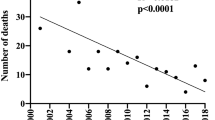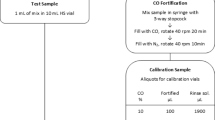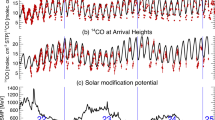Abstract
A PARAGRAPH among the “Research Items” in NATURE of March 25, page 441, states that Dr. Ackermann has made comparative tests of two methods of estimating carbon monoxide gas in air: the palladous chloride method and the hæmoglobin method. The latter method consisted in exposing the hæmoglobin to the gas to be examined; then adding a reducing agent (ammonium sulphide) to the hæmoglobin and examining it with an ordinary spectroscope for the presence of the two absorption bands of carbon monoxide hæmoglobin.
This is a preview of subscription content, access via your institution
Access options
Subscribe to this journal
Receive 51 print issues and online access
$199.00 per year
only $3.90 per issue
Buy this article
- Purchase on SpringerLink
- Instant access to full article PDF
Prices may be subject to local taxes which are calculated during checkout
Similar content being viewed by others
References
J. Indust. Hygiene, 15, p. 1, Jan. 1933.
Author information
Authors and Affiliations
Rights and permissions
About this article
Cite this article
HARTRIDGE, H. Detection of Traces of Carbon Monoxide in Air. Nature 131, 654 (1933). https://doi.org/10.1038/131654a0
Issue date:
DOI: https://doi.org/10.1038/131654a0



